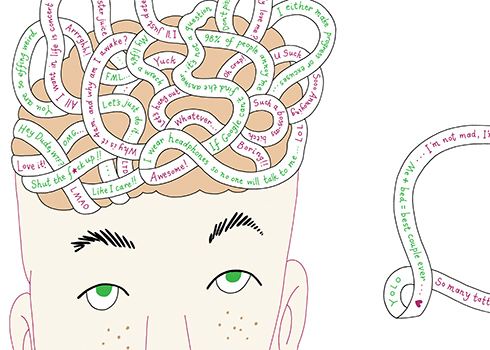Dan Siegel, award-winning educator, child psychiatrist, and author of New York Times bestseller Brainstorm, explores the power and purpose of the teenage brain in Mindful’s June issue. Siegel talks about the brain science behind teen angst and how to turn parents’ concerns into understanding and confrontation into connection. Siegel warns that some of the popular misconceptions we have about the teen brain are making life more difficult for adolescents and adults alike. He shares how science is refuting three long-held myths we mistakenly believe about what makes teens tick:
Myth No. 1: Raging Hormones Make You Crazy
Yes, hormones do increase during this period, but they don’t determine the ins and outs of adolescence—that’s for another piece of anatomy. “We now know that what adolescents experience is primarily the result of changes in the development of the brain,” Siegel writes:
Knowing we’re dealing with developmental and neurological changes—and not a kid hopped up on hormones—undercuts one of the most powerful myths we hold about the teen years.
Myth No. 2: You Just Need to Grow Up
That old phrase, “It’s just a phase,” is not helping. It stems from this idea we have about teenage-hood being a time of mindless upheaval that has to be endured by parents and teens alike. On the contrary, argues Siegel, this upheaval is fruitful and even foundational. Even seemingly senseless behaviors have purpose—beyond confounding parents. Siegel writes:
In very key ways, the ‘work’ of adolescence—the testing of boundaries, the passion to explore what is unknown and exciting—can lay the stage for the development of core character traits that will enable adolescents to go on to lead great lives of adventure and purpose.
Adolescence is turbulent—but teens aren’t just being “crazy” or “immature.” Not just a phase that needs to be grown out of, adolescence is actually a period of growth characterized by “emotional intensity, social engagement, and creativity.” So it’s not about surviving teenage-hood, but understanding and learning from these new desires and drives in ways that enable teens to thrive.
Myth No. 3: Strive for Total Independence
The image of your kid stuffing that final duffle bag into an over-packed station wagon has been cemented in our collective memories, thanks to Hollywood. Beyond fantasy, it is true that teens are pushing for independence during these years and spending more time with friends. But leaving home is not the final frontier for teens to start their passage into adulthood—and Siegel says everyone around the table should aim for interdependence: “The healthy move to adulthood is toward interdependence, not complete ‘do-it-yourself’ isolation.”
In other words, adolescents still benefit from being around adults, even if they are predisposed to nurturing friend bonds more during this period. Siegel writes:
Ultimately, we learn to move from needing others’ care during childhood, to pushing away from our parents and other adults and learning to lean more on our peers during adolescence, to then learning to both give care and receive help from others. That’s interdependence.
For more than just this Glimpse:
- See the full table of contents for Mindful‘s June 2014 issue.






